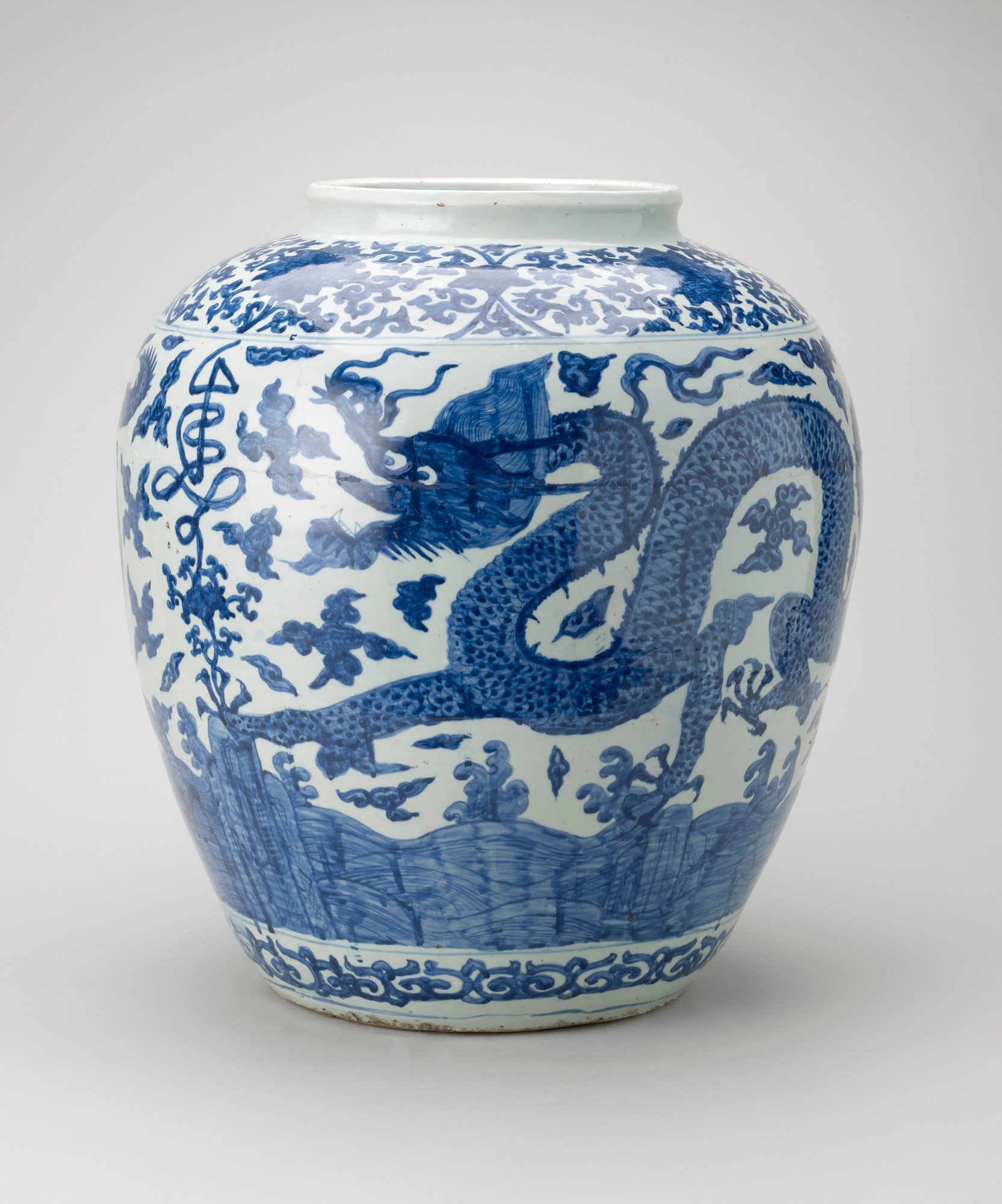
East Meets West
Extraordinary Chinese and Japanese Works of Art in the Royal Collection
Brush pot
pot 1645-65; mount second half 17th centuryRCIN 1049
Over time the decoration on Chinese and Japanese porcelain became more colourful as new pigments were developed and artistic tastes changed. The term wucai (literally 'five colours') was used in China to describe the multi-coloured enamel designs which emerged during the Ming dynasty. In the seventeenth century, these evolved into a colour palette marked by prominent use of greens and blues. Scholars in nineteenth-century Europe called it famille verte. This brush pot is a good example: a scene in a garden is painted in blue and shades of green, depicting two servants assisting a figure and a third preparing tea.
The famille verte style is mainly associated with the reign of the Kangxi Emperor (1661–1722). After this time, greens and blues were superseded by softer, more opaque red and pink tints.







